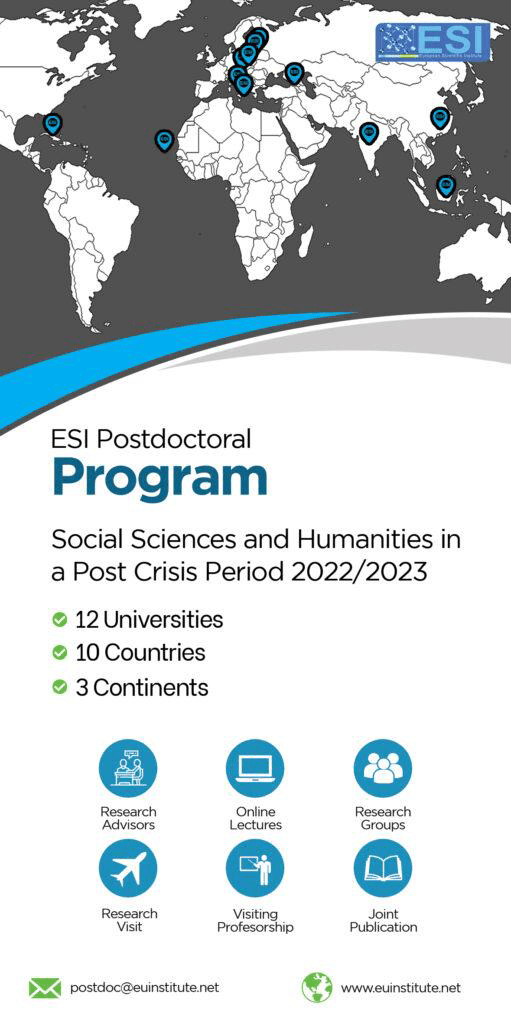Burnout in Nurses: How Job Redesigns Can Help
Abstract
Burnout is a common phenomenon in many modern-day organizations. The literature, however, shows that burnout is more pronounced in nurses relative to other categories of healthcare workers. Unfortunately, there is a dearth in the literature on how organization development interventions can help reduce burn out in nurses. This paper accordingly attempts to examine the ways job redesigns can be appropriated as typologies of organization development interventions, the overarching goal being to propose dimension-specific interventions of job redesigns that can subsequently be empirically tested as predictors in studies, towards understanding of how to reduce burnout experiences in nurses in their everyday undertaking of caregiving.
Downloads
Metrics
References
2. Ada, M. & Cross, O.D. (2020). Effect Of Job Enrichment on Employee Performance. International Journal of Research Science and Management. 7(5), 34–40.
3. Armstrong, M. (2009). Armstrong's Handbook of Human Resource Management Practice. 11th Edition, Kogan Page Limited, London.
4. Ashipala, D. O., & Nghole, T. M. (2022). Factors contributing to burnout among nurses at a district hospital in Namibia: A qualitative perspective of nurses. Journal of Nursing Management, 30(7). 2982–2991.
5. Bakker, A.B. and Demerouti, E. (2016). Job Demands-Resources Theory: Taking Stock and Looking Forward. Journal of Occupational Health Psychology, 22, 273-285.
6. Bakker, A.B., & Demerouti, E. (2007). The Job Demands-Resources Model: State of the Art. Journal of Managerial Psychology, 22,309-328.
7. Berg, J. M., Dutton, J. E., & Wrzesniewski, A. (2013). Job crafting and meaningful work. Purpose and meaning in the workplace, 81, 104.
8. Boonzaier, Billy; Ficker, Bernhard; Rust, Braam (2001). A review of research on the Job Characteristics Model and the attendant job diagnostic survey. South African Journal of Business Management, 32(1), 11-34.
9. Campion, M. A., Mumford, T. V., Morgeson, F. P., & Nahrgang, J. D. (2005). Work redesign: Eight obstacles and opportunities. Human Resource Management, 44, 367-390.
10. Cañadas-De la Fuente, G. A., Vargas, C., Concepción, S. L., García, I., Cañadas, G. R., & De la Fuente, E. I. (2015). Risk factors and prevalence of burnout syndrome in the nursing profession. International Journal of Nursing Studies, 52, 240-249.
11. Castner, Jessica (2017). Professional Flourishing: The Job Demands–Resources Model and Emergency Nursing Journal of Emergency Nursing, 45 (6), 607 – 610.
12. Chang, Y., & Chan, H. J. (2015). Optimism and proactive coping in relation to burnout among nurses. Journal of Nursing Management, 23, 401-408.
13. Cheng, J. C., Chen, C. Y., Teng, H. Y., & Yen, C. H. (2016). Tour leaders’ job crafting and job outcomes: The moderating role of perceived organizational support. Tourism Management Perspectives, 20, 19-29.
14. Chiara, D., Ball, J, Reinius, M. & Griffiths, P. (2020). Burnout in nursing: a theoretical review. Human Resources for Health.1-17.
15. Cort, W. R., Ian M. K., Kristi N. L. & Hannes, Zacher (2017). Job crafting: A meta-analysis of relationships with individual differences, job characteristics, and work outcomes. Journal of Vocational Behavior. 102. 112-138,
16. Cunningham, W.G. (1983). Teacher burnout—Solutions for the 1980s: A review of the literature. Urban Review. 15. 37–51.
17. Daniel, J & Lisa, E. (2021). Towards an understanding of teacher attrition: A meta-analysis of burnout, job satisfaction, and teachers’ intentions to quit. Teaching and Teacher Education, 105.
18. Davis, M.C., Challenger, R., Jayewardene, D.N. & Clegg, C.W. (2014). Advancing sociotechnical systems thinking: A call for bravery. Applied Ergonomics, 45 (2), 17.
19. Demerouti, E., Bakker A.B., Nachreiner, F & Schaufeli, W.B. (2001). The job demands resources model of burnout. Journal of Applied Psychology. 86(3), 499.
20. Duquette, A., Kérowc, S., Sandhu, B. K., & Beaudet, L. (1994). Factors Related to Nursing Burnout. A Review of Empirical Knowledge. Issues in Mental Health Nursing, 15(4), 337–358.
21. Freudenberger, H.J. (1974). Staff burn-out. Journal of Social Issues. 30(1),159–165.
22. Galanis, P., Moisoglou, I., Katsiroumpa, A., Vraka, I., Siskou, O., Konstantakopoulou, O., Meimeti, E. & Kaitelidou, D. (2023). Increased Job Burnout and Reduced Job Satisfaction for Nurses Compared to Other Healthcare Workers after the Covid-19 Pandemic. Nursing Reports.13(3).
23. Grant, A.M. (2008). The significance of task significance: Job performance effects, relational mechanisms, and boundary conditions. Journal of Applied Psychology, 93(1).108-24.
24. Häusser, J. A., Mojzisch, A., Niesel, M., & Schulz-Hardt, S. (2010). Ten years on: A review of recent research on the Job Demand–Control (Support) model and psychological well-being. Work & Stress, 24(1), 1-35.
25. Hackman, J. R., & Oldham, G. R. (1980). Work redesign. Reading. MA: Addison-Wesley.
26. Ibrahim, R. Z. A. R., & Ohtsuka, K. (2014). Review of the job demand-control and job demand-control-support models: Elusive moderating predictor effects and cultural implications. Southeast Asia Psychology. (1).
27. Johnson, J. V., & Hall, E. M. (1988). Job strain, workplace social support, and cardiovascular disease: a cross-sectional study of a random sample of the Swedish working population. American Journal of Public Health, 78(10), 1336-1342.
28. Jun, J., Ojemeni, M. M., Kalamani, R., Tong, J., & Crecelius, M. L. (2021). Relationship between nurse burnout, patient and organizational outcomes: Systematic review. International Journal of Nursing Studies, 119. 1–12.
29. Karasek, R.A. (1979). Job demands, job decision latitude and mental strain: Implications for job redesign. Administrative Science Quarterly, 24, 285-308.
30. Kooij, D. T. A. M., van Woerkom, M., Wilkenloh, J., Dorenbosch, L., & Denissen, J. J. A. (2017). Job crafting towards strengths and interests: The effects of a job crafting intervention on person–job fit and the role of age. Journal of Applied Psychology, 102(6), 971–981.
31. LaBelle, S. (2021). Burnout in the Nursing Profession: Extant Knowledge and Future Directions for Research and Practice. Nursing Communication, 1(1).81-89.
32. Li, Jie., Sekiguchi, T. & Qi, Jipeng. (2020). When and Why Skill Variety Influences Employee Job Crafting: Regulatory Focus and Social Exchange Perspectives. Employee Relations: The International Journal .42 (3). 662–680.
33. Li, J., Yang, H., Weng, Q., & Zhu, L. (2021). How different forms of job crafting relate to job satisfaction: The role of person-job fit and age. Current Psychology.42(3).1-15.
34. Marta, I. A., Supartha, I., Dewi, I. G. A. M., & Wibawa, I. M. A. M. A. (2021). Job enrichment, empowerment, and organizational commitment: The mediating role of work motivation and job satisfaction. The Journal of Asian Finance, Economics and Business, 8(1), 1031-1040.
35. Maslach, C. & Jackson, S.E.(1981) The measurement of experienced burnout. Journal of Occupational Behaviour.2(2):99–113.
36. Maslach, C. (2003). Burnout: The cost of caring. Cambridge, CA: Malor Books.
37. Meng, L., Liu, Y., Liu, H., Hu, Y., Yang, J., & Liu, J. (2015). Relationships among structural empowerment, psychological empowerment, intent to stay and burnout in nursing field in mainland China-based on cross-sectional questionnaire research. International Journal of Nursing Practice, 21, 303-312.
38. Morris, A. (2009). Socio-Technical Systems in ICT: A Comprehensive Survey.
39. Mudallal, R. H., Othman, W. M., & Al Hassan, N. F. (2017). Nurses’ Burnout: the Influence of Leader Empowering Behaviors, Work Conditions, and Demographic Traits. The Journal of Health Care Organization, Provision, and Financing, 54(1), 1–10.
40. Mumford, E. (2000). A Socio-Technical Approach to Systems Design. Requirements Engineering, 5 (2), 125-133.
41. Mumford, E. (2003). Redesigning Human Systems. IRM Press.
42. Niehoff, B. P., Moorman, R. H., Blakely, G., & Fuller, J. (2001). The Influence of Empowerment and Job Enrichment on Employee Loyalty in a Downsizing Environment. Group & Organization Management, 26(1), 93-113.
43. Oldham, G. R. (1996). Job design. International Review of Industrial and Organizational Psychology, 11, 33-60.
44. Pierce, J. R., & Aguinis, H. (2013). The too-much-of-a-good-thing effect in management. Journal of Management. 39. 313-338.
45. Richemond, D., Needham, M., & Jean, K. (2022). The Effects of Nurse Burnout on Patient Experiences. Open Journal of Business and Management, 10, 2805-2828.
46. Rodríguez-García M.C., Ramos-Martínez Á., & Cruz-Cobo, C. (2024) The Influence of Job Crafting on Nurses’ Intent to Stay: A Cross-Sectional Study. Nursing Reports. 14(4).3436-3444.
47. Rudman, A., & Gustavsson, J. P. (2012). Burnout during nursing education predicts lower occupational preparedness and future clinical performance: A longitudinal study. International Journal of Nursing Studies, 49, 988-1001.
48. Salau, O. P., Adeniji, A. A., & Oyewunmi, A. E. (2014). Relationship between elements of job enrichment and organizational performance among the non-academic staff. Marketing and Management Journal, 12(2), 173-189.
49. Siruri, M. M., & Cheche, S. (2021). Revisiting the Hackman and Oldham job characteristics model and Herzberg’s two factor theory: Propositions on how to make job enrichment effective in today’s organizations. European Journal of Business and Management Research, 6(2), 162-167.
50. Sia, S. K. & A., A. (2015). Work Autonomy and Workplace Creativity: Moderating Role of Task Complexity. Global Business Review. 16. 772-784.
51. Spencer, H. K., Grau, A L., Finegan, J. & Wilk, Piotr (2012). Predictors of new graduate nurses’ workplace well-being: Testing the job demands–resources model. Health Care Management Review. 37(2). 175-186.
52. Topa, G. & Aranda-Carmena, M (2022). Job Crafting in Nursing: Mediation between Work Engagement and Job Performance in a Multisample Study. International Journal of Environmental Research and Public Health.19(19).
53. Tims, M., & Bakker, A. B. (2010). Job crafting: Towards a new model of individual job redesign. SA Journal of Industrial Psychology, 36(2),1-9.
54. Tumi, N. S., Hasan, A. N., & Khalid, J. (2021). Impact of Compensation, Job Enrichment and Enlargement, and Training on Employee Motivation. Business Perspectives and Research, 10(1), 121-139.
55. Trist, E., Higgin, G., Murray, H. & Pollock, A. (2016). Organizational Choice. Taylor & Francis Group.
56. Von Bertalanffy, L. (1950). The Theory of Open Systems in Physics and Biology. Science, 111, 23-29.
57. Wang, K., Wang, X., Han, Y., Ye, C., Pan, L., & Zhu, C. (2024). The risk factors for burnout among nurses: An investigation study. Medicine. 103(34).
58. World Health Organization. (2019). Burnout an “occupational phenomenon”: International classification of diseases. Retrieved from https:// www.who.int/mental_health/evidence/burn-out/en/.
59. Wrzesniewski, A., LoBuglio, N., Dutton, J. E., & Berg, J. M. (2013). Job crafting and cultivating positive meaning and identity in work. In Advances In Positive Organizational Psychology. 281-302. Bingley, UK: Emerald Group.
60. Zeng, P. & Hu, X. (2024) A study of the psychological mechanisms of job burnout: implications of person-job fit, and person-organization fit. Frontiers in Psychology.15.
Copyright (c) 2025 Moses Siruri Marwa, Jane Muthoni Kinuthia

This work is licensed under a Creative Commons Attribution 4.0 International License.








